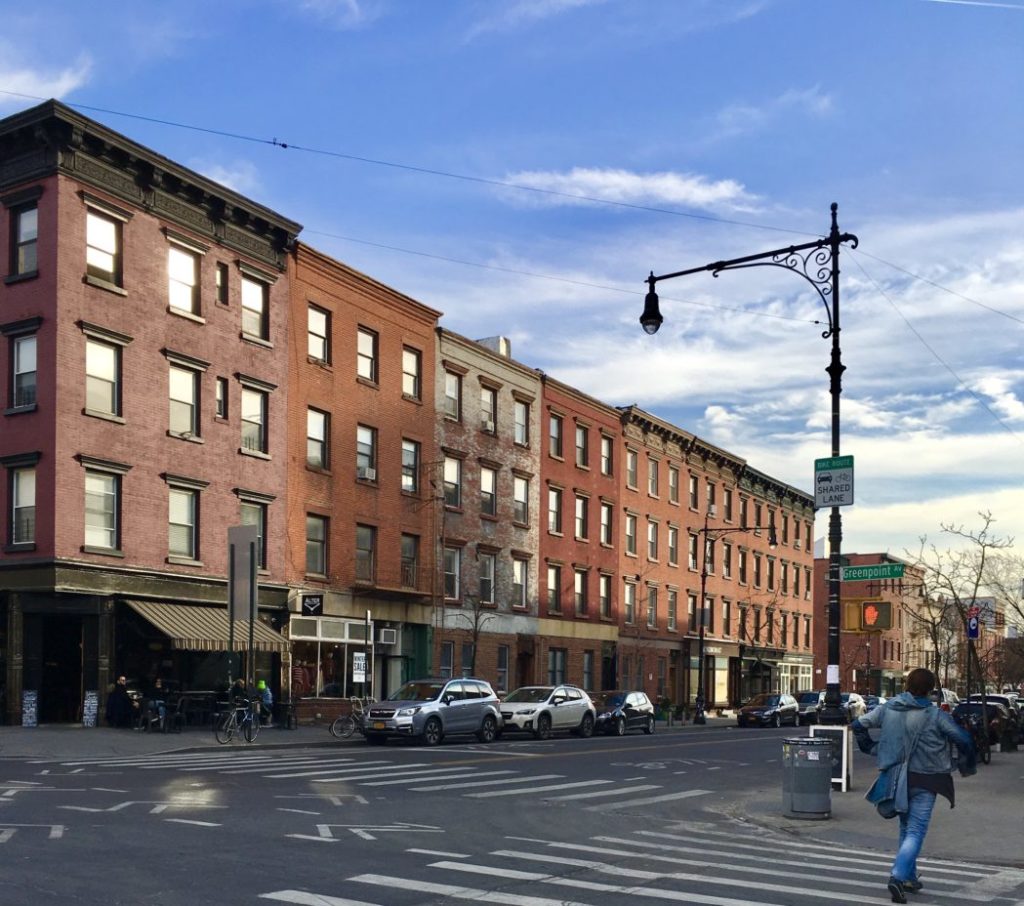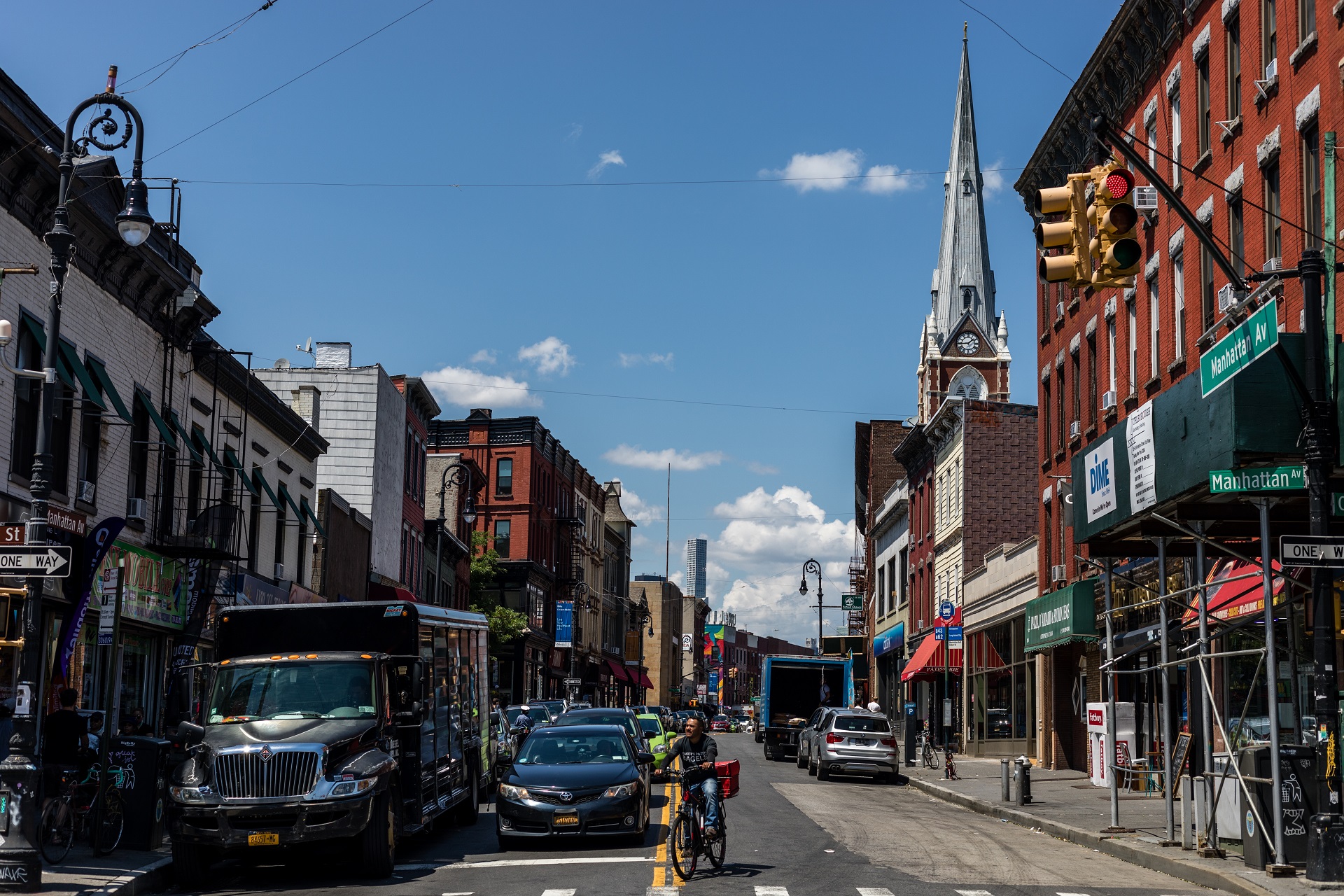Take a winter walk through landmarked Greenpoint

Welcome to landmarked Greenpoint, which is full of 19th-century rowhouses and churches. Photo: Lore Croghan/Brooklyn Eagle
Eye on Real Estate: Come see where shipbuilders lived.
Nineteenth-century Greenpoint was a hotbed of industry. China, porcelain and glass production were big business back then, as was oil refining and shipbuilding.
Now high-rise apartment towers sprout on the shoreline of this waterfront Brooklyn neighborhood. But there’s a historic district where shipyard workers and owners once lived, and a magnificent apartment building Charles Pratt constructed in 1886 as model housing for employees of his refinery, which was called Astral Oil Works.
